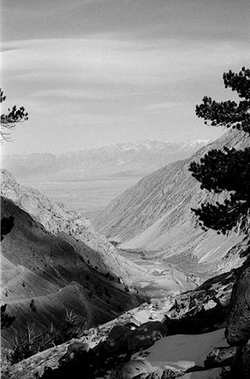Here is a smattering of piano concerti from composers who have done just that. Hear how each piece turns individual influences into unique musical landscapes. These concerti were all written at different milestones along the composers' lives marking summits reached, finish lines crossed.
Enjoy the air up here while you accompany the composers on their journies! Composer and critic acclaim for a number of the pieces is included below.
Concerti
George Antheil
Concerto No. 2 for Piano and Orchestra (1926)
"The concerto, played nicely by Guy Livingston [contains] cadenza-like solos [that] race and ripple."
—Bernard Holland, New York Times
John Corigliano
Concerto for Piano and Orchestra (1968)
"The musical language and fabric of this piece will stand the test of time. While clearly a modern work, engaging harmonies are interwoven throughout this ambitious exploration of compositional techniques, including 12-tone rows and arresting tone clusters, plus hints of minimalism and counterpoint."
— Sabine Kortals, The Denver Post
Avner Dorman
Concerto in A (1995)
Written at the age of 19 while serving in the Israeli Defense Force, Dorman explored Neo-Classism for the first time with this concerto. While it is dedicated to Vivaldi one can hear the influences of Nina Simone, The Police, The Cure, Stravinsky, and Bach.
Morton Gould
Concerto for Piano (1934)
Gould's concerto seems to start in medias res, launching the listener into a fiery world of velvet, insinuating layers. The pianist serves as the protagonist and harmonic support in turn as multiple voices are exposed, a solo and ensemble conversation unfolding. Each of Gould's three movements takes you on a lush and visceral journey.
Reynaldo Hahn
Concerto in E Major for Piano (1931)
From the outset of Hahn's Piano Concerto, you are transported to exotic, dreamlike fields evoked by harp arpeggiation and fluid melodies. The delicate tone established in first movement is upheld throughout while never losing hold of your attention and concludes with cinematic flair.
John Harbison
Concerto for Piano (1978)
"The intent is to give the medium what it requires at this point from the composer. The piano is no longer ruler of the household and the concert stage; it has a future, but only through coming to terms with the lost age of its dominance."
— John Harbison
Aram Khachaturian
Concerto for Piano and Orchestra (D-flat Major) (1936) available in the USA, Canada and Mexico only
Khachaturian's concerto opens with dramatic, stately flair. The phrases of close intervals and kinetic rhythms interchanging with the mellow woodwind passages pique the ear and lead you forwards.
Peter Lieberson
Piano Concerto No. 3 (2003)
"My Third Piano Concerto, composed for Peter Serkin and commissioned by the Minnesota Orchestra, was inspired by certain poems I've been attracted to over the past few years. In particular, I have been drawn to the work of the Chilean poet Pablo Neruda. . . . The Neruda poem that I was first drawn to when drafting my concerto was Leviathan, a depiction of a huge iceberg floating on the dark Arctic sea, illuminated by flashes of soft fluorescent light. The language of the poem is passionate and wrathful."
— Peter Lieberson
Witold Lutoslawski
Concerto for Piano and Orchestra (1988) published by Chester Music in certain territories
"All that has been said applied to matters which are not of great importance compared to the central essence which the composer employs to achieve his goal. What then is this goal? To this question only music itself can provide the answer. Happily, it cannot be explained in words. If it were possible, if a musical work could be described precisely in words, then music as an art would be entirely unnecessary."
— Witold Lutoslawski
Esa-Pekka Salonen
Piano Concerto (2007)
"I was fascinated by the idea of having a completely flexible dynamic between the piano soloist and the ensemble, so that it continuously zooms in and out, very clearly assuming different roles as the piece progresses. The piano is the principal voice, but at times it plays a chamber music role, as a duo partner with a solo instrument from the orchestra; at others the piano becomes a part of the larger ensemble, and at still others it plays completely alone — and everything in between. I was most fascinated with this gradual and smooth transition between different stations."
— Esa-Pekka Salonen
Dmitri Shostakovich
Concerto for Piano No. 1 (1933) available in the USA, Canada and Mexico only
The subtle communication between the piano and plucked strings in the Shostakovich is a nice touch to listen for in the first movement before the tone leans back in a melodic reprieve. Playfulness fills the moderato and a stately haste characterizes the rapid motion of the allegro con brio. This is a charming, dynamic work.
—This playlist was contributed by Tammy Moore





